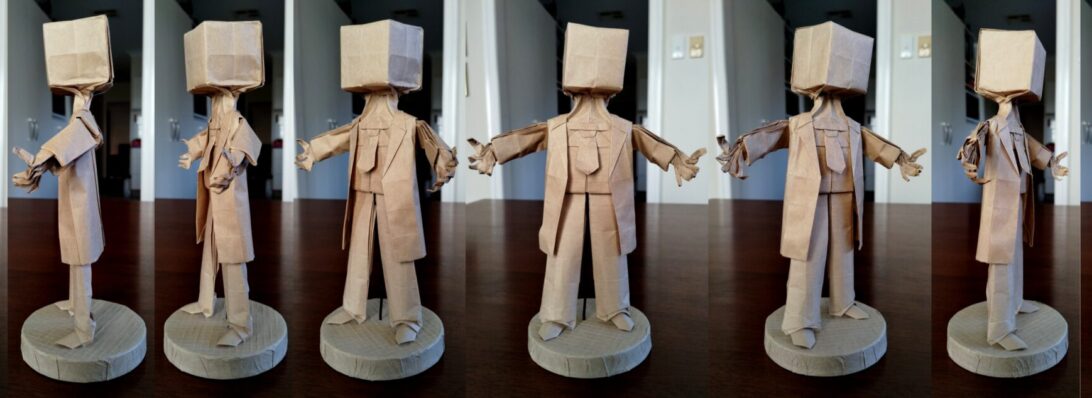I have had this model, described via hand-drawn diagrams for ages and thought it a good one to finish the month with:
This is a tidy little plane, named Cessna after the style of modern single engine aircraft it is modeled on. I am not, however, sure who the designer is – can anyone enlighten me?
A clever use of the bird base with some ingenious accordion pleating to liberate the wings and some interesting pucker pleating to form tail and propeller, there is some very dense folding to shape the fusilage and a cute domed cover for the cockpit, even some vestigial landing gear underneath.
Happy with this as a first fold, can see myself trying to refine it so it is tidier – am sure I could tease some wheels and maybe master the propeller a little better in subsequent folds.












































